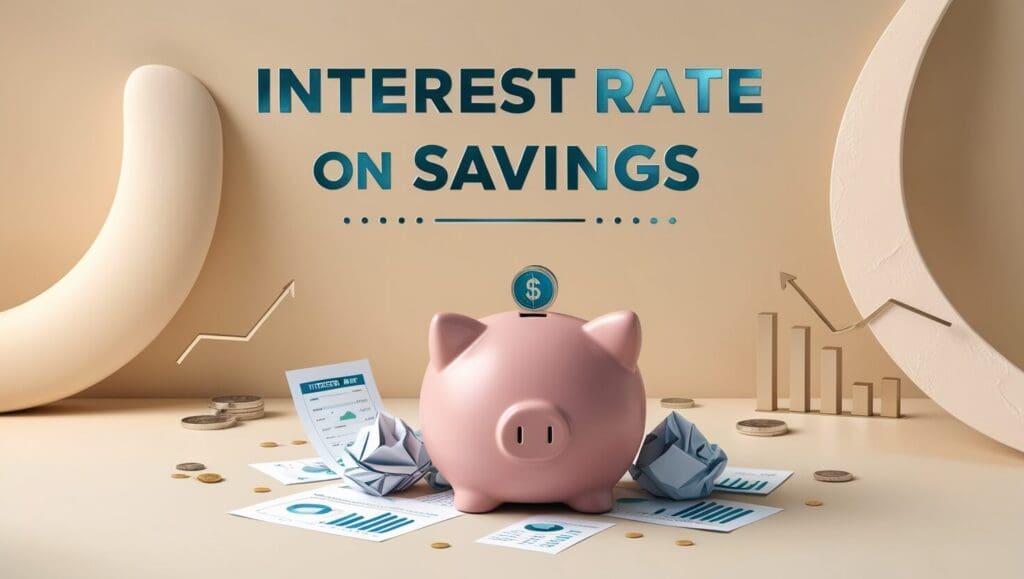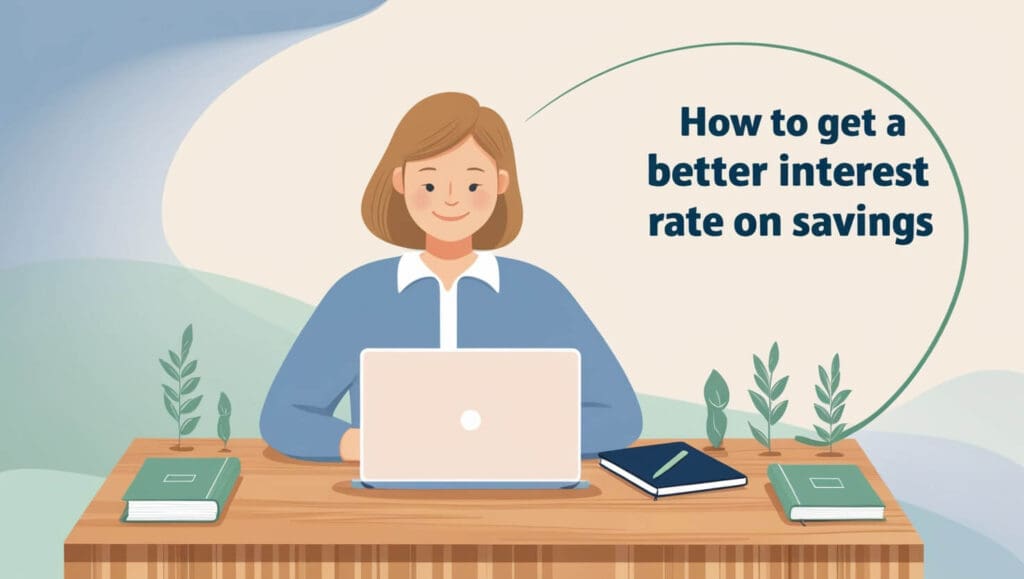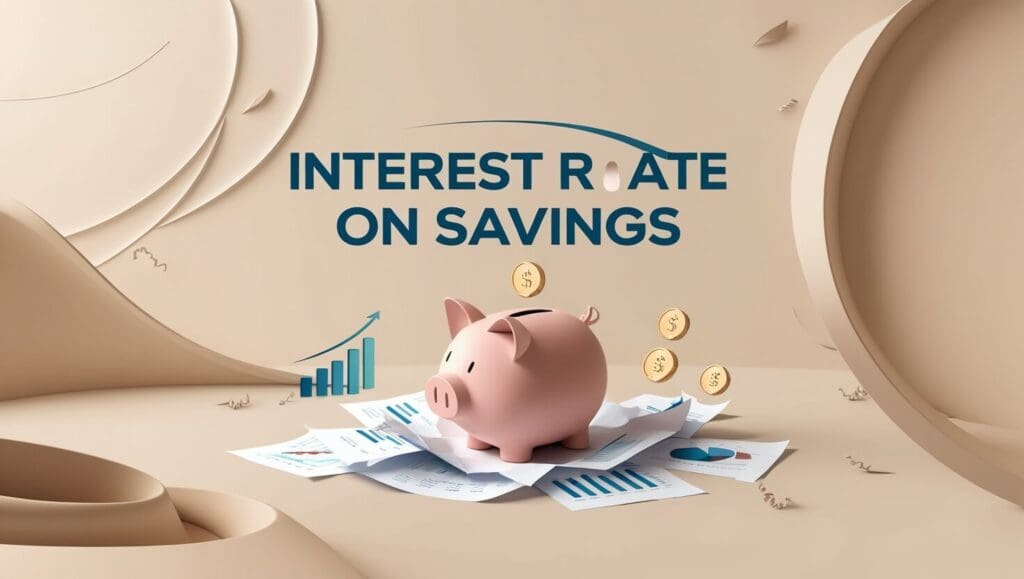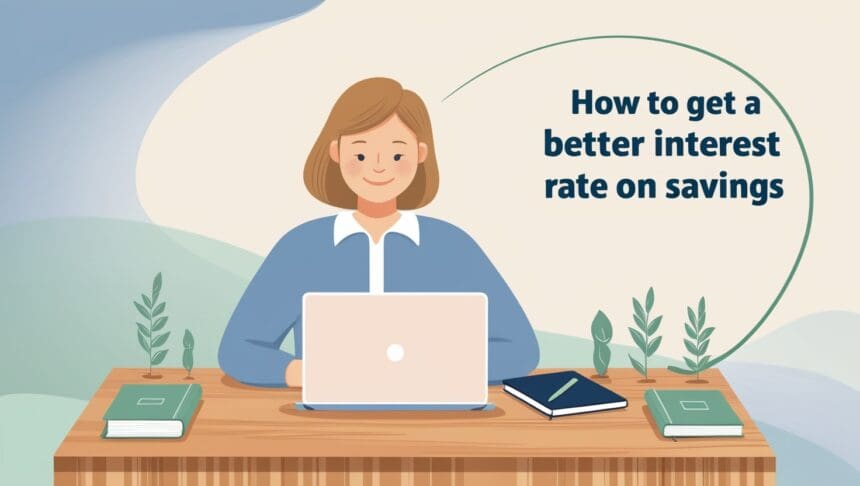Here, I am going to talk about How To Get A Better Interest Rate On Savings With a few key considerations, you will be able to make educated choices, irrespective of whether you wish to optimize a savings account, fixed deposit, or other investment opportunities.
Diving into various approaches will allow you to sharpen your savings and obtain greater returns over a particular period of time.
Understanding Interest Rates
Interest rates reflect the cost of funds or the returns generated from money that has been saved or lent out. Interest rates are usually stated in percentages and can differ based on the category of the loan, prevailing economic conditions, and the default risk of the borrower.

For investment purposes, high-interest rates are favorable, while for loans, a high rate means the cost of the loan will be higher.
To manage inflation and economic expansion, central banks control interest rates which, in turn, impact portfolios ranging from mortgages to credit cards.
How To Get A Better Interest Rate On Savings?

When trying to save money, try picking different banks and see if one offers a high-yield savings account. Online banks usually offer higher interest rates than traditional banks due to having lower operating costs.
Example with U.S. Banks:
Let us now compare Bank of America and Ally Bank:
Ally Bank High-Yield Savings Account: ~4.25% APY(2025)
Bank of America savings account: ~0.01% APY(2025)
If 10,000 is invested:
Bank of America : 10,000 x 0.01% = $1 annually
Ally Bank : 10,000 x 4.25% = $425 annually
That’s a difference of $424 merely by switching to a high-yield savings account.
Earning Money through Interest Credits Indirectly
An indirect way of earning money lies unlocking opportunities through a healthy balance in your savings account, which earns monthly interest credits. Interest credits can be used elsewhere as well for things such as Systematic Investment Plans, where the credits will yield higher returns.
Putting your interest income into professionally managed fund schemes gets the guidance of experts to earn more wealth over time. This technique ensures that your wealth increases relentlessly, makes the most out of your interest income, and guarantees that your financial goals are steadily achieved.
How to Obtain Better Savings Interest Rates?
Look for High-Yield Savings Accounts.
Online banks and credit unions typically tend to provide better interest rates when compared to regular banks, who often have a set range of high interest rates they operate within. Try looking for high-yield savings accounts advertised for 10 to 20 times more than the country’s average savings rate.
Money Market Accounts Might Help
Along with elevated interest rates in comparison to traditional savings accounts, money market accounts also have the added benefit of check writing.
Certificates of Deposits (CDs) Are Another Option
These accounts essentially guarantee an interest rate that will be paid at the end of a specified term, meaning your funds will be inaccessible throughout its duration but can be beneficial in comparison to a regular savings account.
Relationship Banking Can Help You Out
In these scenarios, the interest rates available on your savings account might be higher if you have several accounts with the particular bank, including but not limited to checking, investment and savings accounts.
Check Rates Over Time and Try Negotiating Them
Your existing bank accounts don’t have to be a trap. Try asking your current bank to offer you a better rate, and if they refuse, consider switching banks.
TakeOne or Other Similar Company Platforms Can Help You Out
Additional platforms have begun emerging that allow people to compare rates as well as visually monitor their savings goals and even automate the entire process of saving.
Factors That Can Affect Interest Rates

Conditions of The Economy
Interest rates are generally responsive to the general health of the economy. When growth occurs within the economy, rates tend to increase due to heightened demand for credit.
In economic downturns, however, rates decrease to help stimulate borrowing and economic growth.
Policies Set By a Central Authority
Reserve Bank of India or Fed of America are two examples of central banks that control interest rates. Increment of benchmark interest rate as a monetary policy impacts rates set by the banks at which they accept deposits or lend money.
Estimates of Inflation Controlled
Estimates of Inflation directly correlate to interest rates. As inflation rises, lenders also hike up the interest to ensure that their returns are not severely impacted by inflation. On the other hand, lower inflation might incur lower interest rate.
Credit Availability Questioned
Supply of money as well as requirement of loans plays a crucial role on interest rates. For instance, there is a commonly accepted notion that and increased demand of credit resources along with limited availability will result in an increase in interest rates. The opposite is also true: in case the supply of funds is overly abundant and the desire for loans is lacking, interest rates Will decrease.
Competition in Banking
In order to attract clients, banks offer competitive interest rates. The competition in the banking industry determines the interest provided on savings accounts, the rates charged on loans, and the interest earned on fixed deposits.
There is also greater appeal when market competition exists because banks will use better rates as a marketing tool.
Credit Risk
The default risk of the amount advanced will have an effect on interest rates at different levels. For example, higher interest rates are charged for loans made to high risk individuals or companies, with poor credit ratings, simply because there is a greater possibility of them failing to repay. On the other hand, lesser-known borrowers tend to have lower interest rates charged on them.
Regulatory Constraints
Without a doubt, government interest rules can have certain implications on the rate of interest offered by creditors and the cost imposed by debtors, either directly or indirectly.
For example, taxation structures, levels of capital that has to be maintained by banks, and any government policies concerning the buying and selling of securities will always have impacts on the interest rates charged by banks.
Other Considerations**
International exchange rates, global commerce, and international investment markets are other relevant global economic conditions that can cause interest rates to change.
These conditions, directly or indirectly, impact the inflation rates of a country which, consequently, impacts the interest rates which are predetermined by central banks.
Deposit Amount and Time Period
The amount deposited into a fixed deposit account and the period for keeping it intact affects the interest.
Usually, larger amounts and longer durations earn higher interest, as the bank has more funds to use for an extended duration.
Cost of the Banking Business
Banks have a specific internal finance structure, which along with the cost of operations will also determine the interest.
For instance, a bank facing greater operating expenses and liquidity problems is likely to increase in interest to draw in more deposits.
Risk & Considerations

Inflation Risk
Even if rates are higher, they may not surpass inflation, damaging your return over time.
Liquidity Issues
Fixed-term deposits or high-interest accounts may have restricted access, limiting the use of funds.
Hidden Fees or Penalties
Early withdrawal penalties, fees, or a minimum balance may reduce a certain account’s apparent returns.
Variable Rates
Certain accounts may have interest rate fluctuations, affecting earnings predictability in the long run.
Institution Stability
Assess if the financial institution is credible and has deposit insurance to ensure your funds are safe.
Opportunity Cost
Inaccessibility of funds due to long-term savings may restrict investment in higher return opportunities.
How interest rates impact your savings over time.
The Power of Compound Interest
Growth of savings is further increased through compounding when a higher interest rate is offered. Higher rates take center stage because every interest payment is added to the principal amount, and on each subsequent payment, interest is calculated on the new total, resulting in the total amount growing exponentially over the years.
Effect Over Years
Right away, one can see how a greater interest would yield more returns but the benefits compounded over time transform a greater interest account into a gold mine.
This is why fixed accounts and retirement savings accounts place greater emphasis on the rate of interest advertised.
Erosion from Inflation
The loss of value of savings over time due to rapidly increasing inflation rates is a problem the sector has been contesting.
Inflation rates can diminish the value of the savings account if not matched with appropriate interest rates, and that is the magic higher interest rates obliterate.
Fluctuating Interest Rates
Due to economic factors, the policies of the central bank and other elements, interest rates vary over the period of time.
When you have increasing returns, the rate growth period adds up to the interest you have in your savings.
If the rates are on a decrease, the growth will be stunted. If you are holding a variable interest rate product, then changes in rates will affect your returns directly.
Potential Return
The lower the interest rates are, the slower your earning capabilities will be which means money made from savings will not be able to grow as rapidly as expected.
On the other spectrum, greater interest rates increase the capabilities your savings grow, if you are setting aside funds for the long run toward retirement, education, or a big expense, then having accessibility to those funds is crucial.
Different Account Types and Their Effect on Interest Rates
Higher interest rates are associated with different accounts and types of savings that needs to be invested in.
Fixed deposits offer higher rates than normal savings accounts, therefore different accounts should be able to give you higher interest. Selecting accounts that are associated with high interest rates will have desired consequences with time.
Financial Planning
Knowledge of the impact of the concern savings interest rates have on
your wealth accumulation will enable proper financial planning. First, higher
rates enable faster accumulation of wealth, allowing meeting to
financial goals quicker.
On the other hand, if the savings rates
are low, it may require more time and effort to reach those goals thus
designed saving strategies should be more aggressive.
Pros & Cons
| Pros | Cons |
|---|---|
| Higher Returns: Earn more on your savings over time. | Inflation Risk: Interest may not keep up with inflation. |
| Compound Growth: Interest accumulates faster, boosting your savings. | Liquidity Issues: Some accounts may limit access to funds. |
| Safe and Low-Risk: Savings accounts are typically insured and low-risk. | Hidden Fees: High-yield accounts may have maintenance fees. |
| Flexible Savings Options: You can choose from various savings products. | Variable Rates: Rates may fluctuate, reducing returns. |
| Emergency Fund Growth: Faster growth for your financial safety net. | Opportunity Cost: Funds tied in savings miss higher investment returns. |
Conclusion
Like anything else, achieving great benefits will require some form of effort. Look for various banks or financial institutions with the most favorable interest rates for your savings.
If the bank permits, you can also set up an auto sweep where excess funds from your account can negatively affect interest-bearing deposits.
Furthermore, trying to keep a substantial amount in your account may improve your returns, while specialist accounts designed for certain demographics like senior citizens or women might fetch you better rates.
You can also try opening other accounts, as a well-diversified savings strategy often leads to more growth within your funds throughout the years. All in all, look for the right answers to the questions, where and how to save, in order to increase interest and as such get more returns on your deposits.










